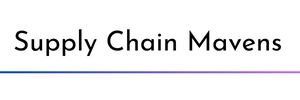Optimizing Inventory Management: A Supply Chain Tip
Effective inventory management is a cornerstone of successful supply chain operations. It involves balancing the need to meet customer demand with the costs associated with holding and procuring inventory. By optimizing inventory management, businesses can improve their cash flow, reduce the risk of stockouts, and enhance overall profitability.
Key Strategies for Optimizing Inventory Management
Demand Forecasting: Accurate demand forecasting is essential for determining optimal inventory levels. By leveraging historical data, market trends, and customer insights, businesses can make informed decisions about product quantities to stock. Advanced forecasting techniques, such as statistical modeling and machine learning, can improve the accuracy of predictions.
Inventory Turnover: Inventory turnover measures how efficiently a business is managing its stock. A high turnover rate indicates that products are selling quickly, minimizing holding costs and reducing the risk of obsolescence. To improve inventory turnover, businesses should focus on optimizing order quantities, minimizing lead times, and implementing effective demand planning.
Safety Stock: Safety stock is a buffer quantity of inventory held to mitigate the risk of stockouts due to unexpected demand fluctuations or supply chain disruptions. While it's important to have sufficient safety stock, excessive levels can tie up valuable capital. By carefully analyzing historical demand data and considering factors such as lead times and variability, businesses can determine the optimal safety stock levels.
ABC Inventory Analysis: ABC analysis categorizes inventory items based on their value and usage. Class A items, representing a small percentage of SKUs but a significant portion of inventory value, require more attention and control. Class B items have moderate value and usage, while Class C items have low value and moderate usage. By focusing on Class A items, businesses can optimize their inventory management efforts and allocate resources more effectively.
Vendor Managed Inventory (VMI): VMI is a collaborative approach where suppliers take responsibility for managing inventory levels at their customers' facilities. By leveraging their expertise and data, suppliers can optimize stock levels, reduce costs, and improve customer satisfaction. VMI is particularly effective for businesses with complex supply chains or frequent stockouts.
The Role of CPIM Certification
ASCM’s APICS Certified in Production and Inventory Management (CPIM) certification equips professionals with the knowledge and skills necessary to optimize inventory management. The CPIM program covers a wide range of topics, including demand forecasting, inventory control, production planning, and supply chain management. By earning CPIM certification, individuals can demonstrate their expertise in inventory management and enhance their career prospects.
Supply Chain Mavens offers online CPIM certification prep classes as well as team training. Contact us for more information or a free consultation.
Conclusion
Effective inventory management is crucial for the success of any business. By implementing the strategies outlined in this blog post and leveraging the knowledge gained through CPIM certification, businesses can optimize their inventory levels, improve profitability, and enhance customer satisfaction. By focusing on demand forecasting, inventory turnover, safety stock, ABC analysis, and VMI, organizations can achieve a more efficient and effective supply chain.


